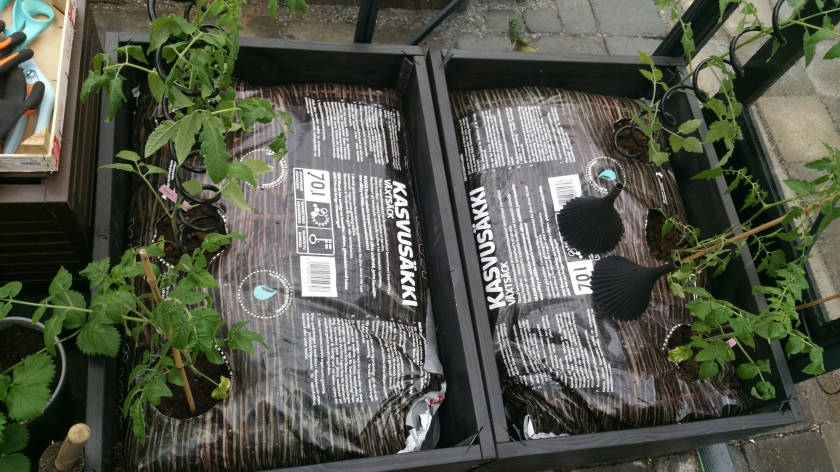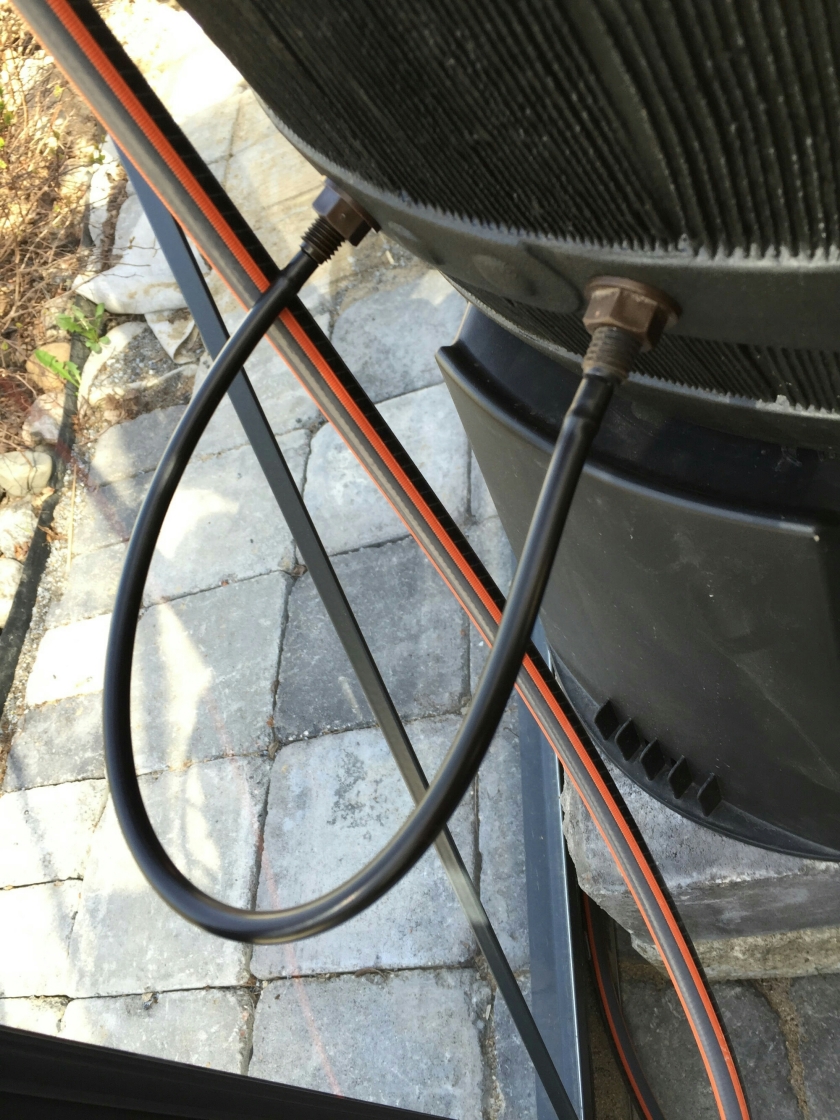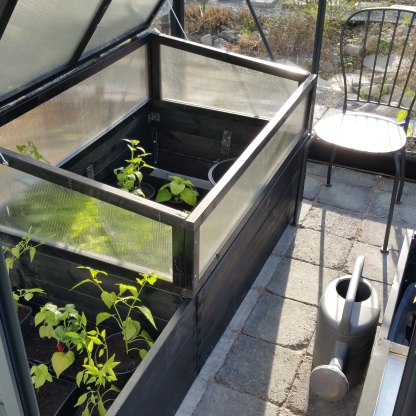[Please spread the word, Mindtrek includes also an established game research track]
=============================================
Call for Papers, Posters, Demonstrations and Workshops
17th to 19th October 2016
Tampere, Finland
http://www.mindtrek.org/2016/academic/
Full papers, posters, demonstrations and workshops due on:
—— DEADLINE 27th June, 2016 ——
In cooperation with ACM, ACM SIGMM, and ACM SIGCHI.
Contributions will be published in the ACM digital library.
=============================================
CALL FOR PAPERS, POSTERS, DEMOS & WORKSHOPS
We are pleased to invite you to the Academic Mindtrek conference, 17th to 19th October 2016. Academic Mindtrek is a meeting place where researchers, experts and thinkers present results from their latest work regarding the development of novel technology, media and digital culture for the society of tomorrow.
Academic Mindtrek is part of the renowned Mindtrek business conference. Mindtrek brings together people not only from various fields and domains but also from different sectors such as companies, academia and various other institutions. This is the perfect opportunity for pushing research results in the practice and industry, as well as getting out-the-box research ideas based on the interaction with industry and practitioners. Mindtrek events are accessible for the Academic Mindtrek attendees, and vice versa.
The academic conference features the following major themes:
– Human-Computer Interaction (HCI)
– Interaction design and user experience
– Games and gamification
– Virtual, augmented and mixed reality
– Media education
– Collaboration and multimedia technologies in education
– Crowdsourcing and citizen participation
– Open data and data science
– New forms of journalism and media
– Theatre, performance and media
– Enhancing work in socio-technological environments
We are especially enthusiastic about applied research and papers related to practical work.
CONFERENCE THEMES
HUMAN-COMPUTER INTERACTION (HCI)
Human Computer Interaction (HCI) track addresses the design, development and implementation of user interfaces and the design of human and technology interaction. The track focuses on design of computer systems for human users, human requirements, usability, ergonomics, privacy aspects, trustworthiness, interaction theories, and sociological and psychological factors. The track brings together people from diverse areas that provide a multidisciplinary forum for academics, designers and practitioners to discuss the challenges and processes of contemporary topics in Human-Computer Interaction. The themes include, but are not limited to, the following subject areas:
• Interaction: e.g. interaction theories and models, new interaction techniques, multimodal interaction, multi-device interaction, social interactions mediated by technology.
• Interfaces: e.g. adaptive and personalized interfaces, usability evaluations, autonomous and proactive interfaces and interfaces as artefacts
• Technology: e.g. architectures for HCI, Cloud computing & Mobile HCI, new technology enablers like various sensors and actuators, toolkits and platforms for new interactive systems.
• Evaluation: e.g. evaluation studies of interactive systems, evaluation methods and techniques and user trials and experiments of interactive technology.
• User insight: e.g. methods for user research, ethnography, and understanding the users and contexts of use.
INTERACTION DESIGN AND USER EXPERIENCE
This track focuses on the practice of designing interactive digital products and services and the user experiences and interactions therein. As people’s quality standards tend to constantly increase, providing a delightful user experience and fluent interaction, the most relevant features have become central goals in the development of digital products and services. The areas of interest include, but are not limited to, the following areas:
• Theories, conceptualizations and reflections on user experience, consumer experience, product experience, interaction design, service design and their relations to other design disciplines.
• Understanding various aspects of user experience: e.g. aesthetics, trust and privacy, product attachment, playfulness, engagement, social elements
• Novel design approaches: e.g. experience-driven design, critical design, design visions
• Techniques, methods, tools and patterns for interaction design and service design
• Measuring and assessing user experience, user studies and user experience evaluations
• Creativity and innovation in design of interactive systems
GAMES AND GAMIFICATION
The culture, development and business of games has become increasingly varied. The current trends range from virtual reality and wearable gaming to freemium business models and serious games. Games research is a multidisciplinary field featuring diverse approaches to understand the phenomenon of games and play.
Academic MindTrek has an inclusive approach in the Games track focusing on novel, innovative and even unorthodox games research from theoretical works, empirical case studies to constructive projects. The Games track themes include, but are not limited to, the following subject areas:
• Design (interaction, mechanics, interfaces…)
• Evaluation (game experience, playability, usability…)
• Development (tools, engines, AI, audiovisual…)
• Business (digital distribution, crowdfunding, revenue models, virtual goods…)
• Platforms (online, social, mobile, desktop…)
• Technology (virtual, augmented and altered reality…)
• Serious games (education, health, persuasive, simulations…)
• Gamification (motivation, effects, case studies…)
• eSports (culture, streaming, fandom…)
• Hybrid games (digital-physical, board games, toys…)
• Online gambling (lottery, casino, betting…)
• Players (demographics, inclusivity, accessibility…)
• Indie (innovation, modding, transgressive…)
VIRTUAL, AUGMENTED AND MIXED REALITY
Mixed reality refers to merging of real and digital realms in order to produce new environments where physical and digital objects co-exist and interact in real time. We consider this broadly, covering both purely virtual realities, as well as augmented reality, where the perception of the real-world is enhanced with digital content. With new technologies for capturing, modelling, simulating and tracking the reality and for producing realistic hybrids of the real and digital, this field provides immense opportunities for novel applications in all areas of life. The main focus on this track is on the interactions between technology and its users rather than the technological enablers. Therefore, we welcome submissions related to, e.g.:
• Prototypes of applications or devices for virtual or augmented reality
• Studies of user perceptions, user experience and acceptance of new mixed reality technology
• Methods and processes for producing mixed reality environments
• Augmenting human perception and activity with mixed reality technology
• User interface solutions for mixed reality interactions
MEDIA EDUCATION
Media and IT play an increasingly central, diverse and complex role in contemporary life from early age to adulthood. The essential focus of media education is on developing media literacy linked to information and communication technology in learning, media production and critical thinking in media saturated societies. This field is of keen relevance for the development of education curricula across all levels, and especially for children and young people today. The track encourages papers on, for example, conceptual developments, practical skills that are necessary for competence in the area, learning environments and, methodological discussions.
COLLABORATION AND MULTIMEDIA TECHNOLOGIES IN EDUCATION
Education is increasingly using tools and solutions to support learning and collaboration on mobile, online and distance platforms and with related applications. Furthermore, various types of multimedia technologies and solutions can be used in educational context.
We welcome submissions on the collaboration and multimedia technologies, platforms, solutions, and trials in mobile, online, and distance learning contexts as well as in developing and rural regions. Theoretical, methodological and empirical submissions are welcome on design, development, evaluation, and actual use of tools, solutions, and multimedia technologies and created data from lab to real-life context. The submissions can address contexts such as daycare, schools and higher education, as well as in professional development in continuing education, MOOCs, or in informal learning contexts. Learners’ or educators’ viewpoint, or the educational aspects and goals can also be covered in the submissions, for example.
CROWDSOURCING AND CITIZEN PARTICIPATION
Crowdsourcing and citizen participation have become part of everyday activities in media landscape. Crowds or citizens, can solve problems, create, contribute, share, and analyze multimedia content and data, participate and influence decision making. Crowds contributing to open data can enable creating innovative applications, new multimedia forms, novel business models and platforms by utilizing the emerging opportunities. This track welcomes submissions on using crowdsourcing and citizen participation in multimedia and open data landscape. Submissions can include design, development, evaluation and use of solutions and platforms and processes for supporting crowdsourcing and citizen participation. Topics related to the cross-section of multimedia or open data, and crowdsourcing or citizen participation, such as gamification, motivation, incentives, privacy, as well as design and evaluation by using crowdsourcing and citizen participation are welcome to this track.
OPEN DATA AND DATA SCIENCE
Accessing, creating, analysing and utilizing good-quality data plays a central role in the development of the digital economy. The exponential accumulation of data, both sensor-based and user-created, opens new avenues for applications in, for example, various industry sectors, science, management, E-Government and E-Learning, artificial intelligence, predictive analytics, and knowledge work. But what data is interesting and where does it come from? How to access it, analyse it, make sense of it, or to build applications or ecosystems based on it? We are looking for submissions that address the challenges and opportunities related to Open data, Data science and Big Data. The submissions can, e.g., introduce computational methods for analysing, visualizing or acquiring various types of data, envision opportunities for or present developed applications that utilize open data, describe and analyse new (open) data sets, or present procedures for extracting insight from various data. In addition to the usual scientific peer review criteria, the evaluation of submissions about new data sets includes novelty, design and availability. This track is organized in association with the W3C Finnish office.
NEW FORMS OF JOURNALISM AND MEDIA
The hottest topic in journalism and publishing industry in recent years has been the “mobile first” approach. This means that particularly in the news media focus has shift more and more from print or desktop-oriented publishing to mobile-first strategies. Smartphones and tablets enhanced with the publications presence in social media are now at the core as the news media tries to meet its audience and customers at first hand. Engaging the audience with the help of these new tools is increasingly important also for non-news media, such as traditional magazines.
This track focuses on new and emerging forms of creating, distributing and presenting journalism in this new era. We have an emphasis on visual forms of storytelling and engaging audiences. This doesn’t mean other forms or genres of journalism and media are excluded.
We welcome submissions related to, e.g. use of online video, multimedia and data visualization projects in journalism, news mobile services, innovative ways of utilizing time lapse, hyper lapse, web videos, metadata, interactivity and news games. We are particularly interested in papers discussing the use and experiences of augmented, mixed and virtual reality and omni-directional video in journalism and immersive storytelling.
THEATRE, PERFORMANCE AND MEDIA
Discussions on the mediatization of performance and the use of theories and methods of theatre
and performance studies in media research enable new analytic paths to questions of cultural activity and representation. Human actions in the media, and the automated, semi-automated or computer-controlled processes used in creative practices generate unforeseen modes of performativity. Consequently, the fields of art and media now promote a culture of participation that calls for critical notions of transformative identity, new forms of co-creation and open performative environments, as represented by the many platforms of social media and emerging forms of non-linear/non- human game play. As components of user-centered ecologies and economies, these mostly digital phenomena suggest a cultural milieu where communicative processes, environments of operation, and shared or individual experiences are constantly performed and re-performed (created) by their users. The theater, performance and media track welcomes papers that discuss (but are not necessarily limited to) the following topics:
• The use of media in performance
• Digital / non-digital / hybrid performance
• Performances in specific media environments
• The performative aspects of media
• Performances in video games and other virtual environments
• The use of Motion Capture and other real time technologies in performance
• Live streaming of theatre performances
• Non-human performativity
ENHANCING WORK IN SOCIO-TECHNOLOGICAL ENVIRONMENTS
The aim of the track is to present novel approaches on research of socio-digital working environments. The underlying theme is information ergonomics, yet it covers many disciplines and perspectives. The track welcomes methodological, theoretical and empirical papers on contemporary work settings.
CONFERENCE PUBLICATIONS
Academic Mindtrek is organized in cooperation with ACM SIGMM, and ACM SIGCHI. The conference proceedings will be published in the ACM Digital Library, which includes full papers, posters, workshop proposals and demonstration proposals. All papers should follow the style guidelines of the conference. In the Finnish classification of publication forums, Academic Mindtrek proceedings are classified as Jufo 1.
There will also be rewards for the best papers from the academic conference.
FULL PAPER PROPOSALS
All submissions will be peer-reviewed double blinded, therefore please remove any information that could give an indication of the authorship. The papers should contain 6-10 pages, including the list of references.
WORKSHOP PROPOSALS
Workshop proposals should be between 2-4 pages long. We welcome you to suggest workshops as part of the Academic Mindtrek. Workshop proposals should include the organizing committee, a description of the theme and goals of the workshop, a short CV of organizers, duration, and the schedule. Workshop organizers can create their own proceedings of the accepted position papers.
Depending on the attracted number of papers for each workshop, we provide space for either half-day or full-day workshops. Previous examples include e.g. a workshop on eLearning.
DEMONSTRATION PROPOSALS
Interactive experience demonstrator proposals should be either short papers (2-4 pages long) or full papers (6-10 pages) and include: a) a description and motivation of the interactive experience demonstrator; b) general architecture of the interactive experience demonstrator; c) description of the main features of the demonstrator; d) a brief comparison with other existing related interactive experience demonstrators; e) audio-visual materials to illustrate the interactive experience demonstrator (a poster or a roll-up and other material on a laptop, for example); f) the type of license (if applicable), g) the Internet address of the interactive experience demonstrator (if applicable), and h) description of the scientific basis behind the interactive experience demonstrator (e.g., a regular paper presentation). It is strongly recommended that the authors make a video of the interactive experience demonstrator available on the Internet to accompany the article submission.
POSTER PRESENTATIONS
Posters proposals should be between 2-4 pages long and a poster should be presented during the conference. Attendees have the possibility to exhibit their posters on a A0 poster wall during the conference.
SUBMISSION DEADLINES
June 27th, 2016: Deadline for full papers, posters, demonstrations and workshops submissions.
August 19th, 2016: Notification of acceptance/rejection.
August 26th, 2016: Conference registration & copyright forms submission.
September 2nd 2016: Camera-ready papers submission.
October 17th to 19th, 2016: Academic Mindtrek Conference 2016
ORGANIZING COMMITTEE
Academic Mindtrek Conference Chair
Markku Turunen, University of Tampere
Program Chair
Janne Paavilainen, University of Tampere
Proceedings
Silvia Rubio Hernandez, University of Tampere
Local Arrangement Chair and Conference Management
Olli Purma, COSS Association
Mindtrek Conference Chair
Timo Väliharju, COSS Association
LOCAL ORGANIZERS
Ossi Nykänen, Tampere University of Technology
Riku Roihankorpi, University of Tampere
Heli Väätäjä, Tampere University of Technology
Pekka Kallioniemi, SIGCHI Finland and University of Tampere
Thomas Olsson, SIGCHI Finland and Tampere University of Technology
Anssi Männistö, University of Tampere
Sirkku Kotilainen, University of Tampere
Mikko Kanninen, University of Tampere
Marleena Huuhka, University of Tampere
For more info, contact academic.info@mindtrek.org
SUBMISSION GUIDELINES
Please use the templates provided on the style guidelines site. A template for .doc can be downloaded from https://www.acm.org/binaries/content/assets/publications/article-templates/pubform.docx and the LaTeX guidelines can be found in http://www.acm.org/sigs/publications/proceedings-templates .
Note that since the papers will be published by the ACM digital library all authors need to sign an ACM copyright form. For further guidelines please go to the ACM copyright form website (http://www.acm.org/publications/copyright_form). The copyright form would be sent through an automated system only for accepted papers.
You can start sending in your papers from April 15th onwards.
STAY INFORMED
Email: academic.info@mindtrek.org
Facebook: www.facebook.com/groups/AcademicMindTrekConference/
SUPPORTED BY
COSS Association, City of Tampere, Tampere University of Technology (TUT), Tampere University (UTA), Tampere University of Applied Sciences (TAMK) and SIGCHI Finland.



































You must be logged in to post a comment.